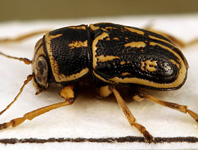Abstract
Samples from the scarcely-studied sedimentary seabed from the Isla del Coco (Costa Rica) yielded a single species of Tanaidacea, belonging to a new genus of Leptocheliidae, Cocotanais. The new genus shows affinities with Pseudonototanais and Heterotanais in bearing a conspicuous forcipate cheliped in the males, which in Cocotanais has a modified merus and carpal flange. Other distinct characters of the males are a triangular cephalothorax, a three-articled antennular peduncle and swollen bases of pereopods 4–6. Females have a four-articled antennule, a maxilliped endite with three distal flat spines and two inner coupling hooks, and a maxilliped basis with two long setae. The species was found in sheltered bays, both free-living in the sediment and also as a commensal of anemones (Infraorder Boloceroidaria), thus representing the first reported case of such an association.

